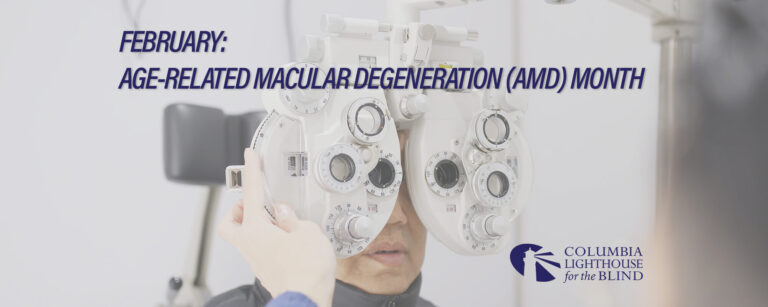Age-related macular degeneration (AMD) is the leading cause of blindness in older Americans. As the over-65 population has grown, the number of cases of visual impairment and loss due to AMD has increased significantly.
AMD is a disease of the central part of the retina, the nerve tissue that lines the inside of the eye and is responsible for capturing images and starting the process that leads to vision. The macula, located at the back of the eye in the center of the retina, is responsible for sharp central vision, such as reading and discerning smaller objects and print. Damage to the macula can result in the loss of the ability to operate a motor vehicle, type on a computer, read the directions on a bottle of medicine, or tell a $5 bill from a $20 bill, for example.
People with light skin and light (blue, green) eyes are the most susceptible to AMD, although people of all ethnicities and races can be affected. Smoking, high blood pressure (hypertension) and a diet full of fatty foods can increase the risk of developing AMD.
AMD occurs when deposits accumulate underneath the macula. These deposits, called drusen, can disrupt the normal structure and function of the macula, and lead to atrophy of the healthy, normal cells that are responsible for vision. The presence of drusen and atrophy are termeddryAMD, and usually result in only minimal to moderate vision loss. This process is usually quite gradual, and can take years to affect a person’s vision.
In 10-20% of patients with AMD, the damage caused by the drusen can result in the growth of abnormal blood vessels into the retina. These blood vessels, called neovascular membranes, can result in bleeding and leakage of fluid, which can cause a moderate to severe loss of vision. This is termed wetAMD. Bleeding and leakage into the macula can occur in the space of hours to days.
Wet macular degeneration is treated with injections of medicines into the middle if the eye (the vitreous cavity). Injecting the drug directly into the eye allows for maximal effect and avoids most systemic side effects. Most patients with wet AMD require injections every 4-6 weeks.
While there is no treatment for dry AMD, there are several known risk factors that can be modified to reduce the risk of vision loss. Smoking cessation, maintaining normal blood pressure, and avoiding a diet high in fatty foods are attainable and effective steps to maximize eye health. The Age-Related Eye Disease Study (AREDS-2) established the beneficial effect of a combination of vitamins for patients with moderate dry AMD. This combination (vitamins A, C, E, and zinc) is available in a number of over-the-counter preparations, and are taken twice daily. No other vitamins or supplement has been proven to benefit patients with AMD.
A number of newer therapies for both wet and dry AMD are under investigation. Patients with AMD should report any sudden changes in vision to their ophthalmologist immediately. Prompt treatment can limit the damage of new or worsening bleeding or leakage.


